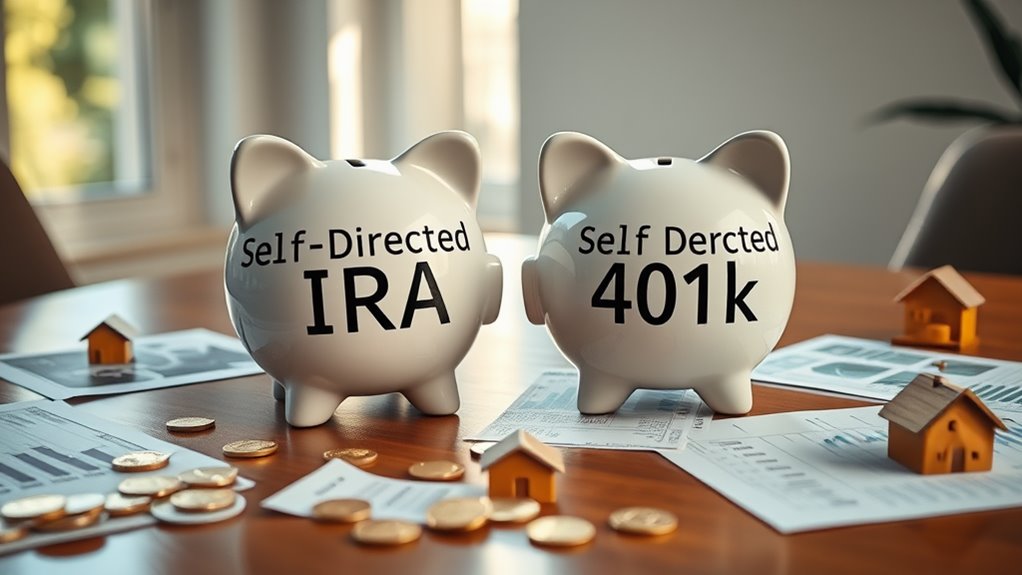Investing in real estate through your 401(k) can provide tax advantages, diversification, and potential for higher returns. You’ll gain control over your investments with self-directed accounts, allowing rental income and property appreciation to grow tax-deferred. However, you must follow strict IRS rules, avoid prohibited transactions, and guarantee fair market valuations. Liquidity challenges and UDFI tax risks require careful planning. Exploring further about 401K Real Estate Investing will uncover strategies to maximize these opportunities while staying compliant.
Key Takeaways
- Real estate in a 401(k) offers tax-deferred growth and diversification beyond traditional investments.
- Self-directed 401(k)s allow direct property purchases, rental income, and potential appreciation.
- Avoid prohibited transactions like self-dealing to comply with IRS rules and maintain tax benefits.
- Annual fair market valuations by an independent third party are required for IRS compliance.
- Non-recourse loans can finance real estate investments while protecting personal assets from risk.
Benefits of 401K Real Estate Investing
When you invest in real estate with retirement funds, you can access significant tax advantages, such as tax-deferred or tax-free growth, depending on whether you use traditional or Roth accounts. Real estate investments provide diversification, reducing reliance on volatile traditional assets. By using retirement funds, like self-directed IRAs, you gain control over investments, allowing you to select properties that align with your goals. Rental income and property appreciation can generate higher returns than conventional options, enhancing your portfolio’s performance. These earnings can remain within your retirement account, benefiting from compounding growth over time. Investing in real estate also supports wealth building, as properties often appreciate in value while generating consistent income. Leveraging retirement funds for real estate helps you secure long-term financial stability while maximizing the tax benefits of your account. This strategy offers a balanced approach to growing your retirement savings through tangible, income-producing assets. Investing in recreational land can further enhance your portfolio, as demand for such properties continues to rise, offering robust returns.
Essential IRS Rules for 401(k) Real Estate Investments
You must avoid prohibited transactions, such as self-dealing or purchasing property for personal use, to maintain your 401(k)’s tax-advantaged status. Confirm an independent third party conducts an annual fair market valuation of your real estate investments to meet IRS compliance. Violating these rules can lead to penalties or disqualification of your account’s tax benefits.
Prohibited Transactions
Prohibited transactions in 401(k) real estate investing can jeopardize your retirement savings if not carefully avoided. These include self-dealing, which involves using your retirement account for personal gain or engaging in transactions with disqualified persons, such as family members or certain entities. The IRS rules define disqualified persons broadly, covering you, your spouse, ascendants, and descendants. Violating these rules can lead to severe penalties, including disqualification of your retirement account and immediate taxation of its entire value. Additionally, income from debt-financed property may trigger Unrelated Business Income Tax (UBIT), requiring strategic financial planning. Always guarantee compliance to protect your long-term goals.
- Avoid self-dealing to prevent IRS scrutiny.
- Identify and steer clear of disqualified persons.
- Be aware of UBIT risks with debt-financed property.
Fair Market Valuation
Annual fair market valuation is a critical requirement for real estate held in a self-directed 401(k), guaranteeing compliance with IRS regulations and accurate asset reporting. You must engage an independent third party to conduct the valuation, as this guarantees objectivity and avoids conflicts of interest. The fair market value must reflect the price your property would fetch in an open market under normal conditions. Skipping this annual process can result in penalties, disqualified transactions, and potential tax liabilities. Maintain thorough documentation of the valuation process and results to support IRS compliance and defend against audits. Proper asset reporting tied to the fair market valuation helps guarantee your self-directed 401(k) remains compliant with IRS regulations, protecting your investment and avoiding costly consequences.
Comparing Self-Directed IRAs and Self-Directed 401(k)s

When evaluating self-directed IRAs and self-directed 401(k)s, it’s important to contemplate key differences in contribution limits, loan options, and tax implications. Self-directed IRAs typically offer lower contribution limits—$6,500 annually for those under 50 and $7,500 for individuals 50 and older—while self-directed 401(k)s allow up to $23,000 (or $30,500 if 50+). Self-directed 401(k)s also let you take loans, a feature unavailable in self-directed IRAs. Tax implications vary considerably: income generated from debt-financed property in a self-directed IRA may incur UDFI tax, whereas self-directed 401(k)s are exempt from UBIT. Additionally, self-directed IRAs require fair market valuations from a third party, adding to administrative processes, while self-directed 401(k)s often have fewer valuation requirements but may involve more complex property management.
- Contribution Limits: Self-directed 401(k)s allow higher contributions than self-directed IRAs.
- Loan Options: Only self-directed 401(k)s permit loans against your account balance.
- Tax Implications: Self-directed IRAs may face UDFI tax; self-directed 401(k)s avoid UBIT.
Steps to Rollover Funds From a 401(K) to a Self-Directed Account
Start by understanding the rollover process, which involves transferring funds from your 401(k) to a self-directed IRA. Next, select a custodian that specializes in self-directed accounts and supports real estate investments. Finally, complete the required paperwork accurately to guarantee a smooth and compliant transfer.
Rollover Process Overview
To rollover funds from a 401(k) to a self-directed IRA, you’ll need to initiate a direct transfer to avoid taxes and penalties. Verify your SDIRA custodian supports real estate investments and follow IRS regulations during the 401(k) transfer process. You’ll complete the necessary paperwork with both your 401(k) plan administrator and custodian, which can take several weeks. Avoid receiving funds directly, as this may trigger tax implications and penalties. Once the transfer is complete, confirm the funds availability in your self-directed IRA to begin executing your real estate investment strategy.
- Verify custodian capabilities for real estate investments before initiating the rollover process.
- Complete all required paperwork to verify a smooth 401(k) transfer.
- Direct transfer only to avoid unnecessary tax implications.
Selecting Custodian Account
How do you choose the right custodian for rolling over your 401(k) into a self-directed account? Start by selecting a custodian experienced with self-directed IRAs or 401(k)s, particularly those authorized to hold real estate investments. Make certain they understand IRS regulations to maintain your tax-deferred status during the rollover process. Verify their ability to handle the funds transfer efficiently, minimizing delays or errors. Confirm they provide clear guidance on compliance matters and assist with required paperwork. Before finalizing your decision, research their reputation, fees, and customer service quality. Once chosen, communicate with your 401(k) plan administrator to initiate the rollover. A reliable custodian guarantees a smooth conversion, allowing you to focus on future investment decisions without unnecessary complications or risks.
Completing Required Paperwork
Before you can roll over funds from your 401(k) to a self-directed account, you’ll need to complete the necessary paperwork accurately and promptly. Start by filling out the rollover request form provided by your SDIRA custodian, making certain all account details are correct. Double-check that your custodian is authorized for real estate investments, as not all support this option. Adhere to IRS regulations to avoid taxes and penalties by opting for a direct rollover. Once submitted, the process can take several weeks, so plan your investment timeline carefully. After the rollover, confirm your SDIRA has enough funds for real estate investments, including closing costs and reserves for property management.
- Verify SDIRA custodian supports real estate investments.
- Use a direct rollover to avoid taxes and penalties.
- Make sure sufficient funds for closing costs and property management.
Key Considerations for Adding Real Estate to Your 401(k)

While investing in real estate through a 401(k) can diversify your retirement portfolio, it requires establishing a self-directed 401(k) to access this option. This account allows you to include residential or commercial properties as part of your real estate investments, offering the benefit of tax-free growth on income generation. Be mindful of the annual contribution limit, which is $22,500 for those under 50 and $30,000 for those 50 and older in 2023. Confirm you adhere to IRS regulations, as prohibited transactions like self-dealing can disqualify your account’s tax advantages. Before committing, evaluate your investment goals and risk tolerance, considering the illiquidity and market volatility associated with real estate. By understanding these factors and maintaining compliance, you can strategically leverage a self-directed 401(k) to build a robust, diversified retirement portfolio with real estate as a potential cornerstone.
Investment Strategies for Real Estate Within a 401(K)
To effectively incorporate real estate into your self-directed 401(k), you’ll need to explore various strategies tailored to your financial goals and risk tolerance. A self-directed 401(k) allows you to diversify your portfolio through real estate investing, offering opportunities like purchasing rental properties for passive income or flipping houses for quick profits. Additionally, you can participate in syndications to pool resources for larger commercial ventures. Leveraging non-recourse loans can help finance properties while protecting personal assets from liability. Always guarantee compliance with IRS regulations to avoid prohibited transactions and maintain tax-free growth. By carefully aligning your investment strategies with your long-term objectives, you can maximize the benefits of real estate within a tax-advantaged retirement account. Consider exploring seller financing to minimize upfront costs and expand your investment opportunities.
- Rental Properties: Generate steady passive income while benefiting from tax-free growth.
- Flipping Houses: Target short-term profits through property renovations and resale.
- Syndications: Pool funds to invest in larger commercial real estate projects.
Financial and Tax Implications of 401(k) Real Estate Investing

Although investing in real estate through a self-directed 401(k) offers tax-free growth and potential high returns, it is vital to understand the financial and tax implications to make informed decisions. Rental income and property appreciation grow tax-deferred within your account, enhancing long-term wealth. However, using leverage through non-recourse loans may trigger Unrelated Debt-Financed Income (UDFI) tax on income from debt-financed properties, though self-directed 401(k)s are generally exempt from UBIT. Required Minimum Distributions (RMDs) starting at age 73 can complicate financial planning, especially if your real estate holdings lack liquidity. Additionally, annual contributions are capped at $23,000 ($30,500 if 50 or older), limiting how much you can invest in real estate over time. Carefully weigh these factors to align your strategy with your retirement goals and guarantee compliance with IRS regulations. Proper planning maximizes tax-free growth while mitigating potential risks.
Pros and Cons of Including Real Estate in Your 401(k) Portfolio
Adding real estate to your 401(k) portfolio can diversify your retirement assets and potentially boost returns through tax-free growth of income and appreciation. It offers opportunities for passive income via rental properties and reduces dependence on traditional investments like stocks and bonds. However, you’ll face liquidity challenges, as selling real estate can take time, complicating access to funds for required minimum distributions. Additionally, strict IRS regulations on property use and prohibited transactions demand careful management to avoid penalties that could undermine tax advantages.
- Tax advantages: Benefit from tax-deferred or tax-free growth on real estate income and appreciation.
- Diversification: Include residential or commercial properties to spread risk in your retirement portfolio.
- IRS compliance: Stay vigilant with regulations to preserve the account’s tax-deferred status.
Weighing these pros and cons guarantees you make informed decisions about integrating real estate into your 401(k).
Conclusion
Investing real estate in your 401(k) offers diversification, potential growth, and tax benefits. You’ll gain control over your assets, expand your investment options, and build a tangible portfolio. Yet, you must navigate IRS rules, manage risks, and assess fees. You’ll weigh liquidity constraints, understand tax implications, and plan strategically. By balancing pros and cons, aligning with your goals, and staying informed, you can confidently enhance your retirement strategy with real estate investments.




